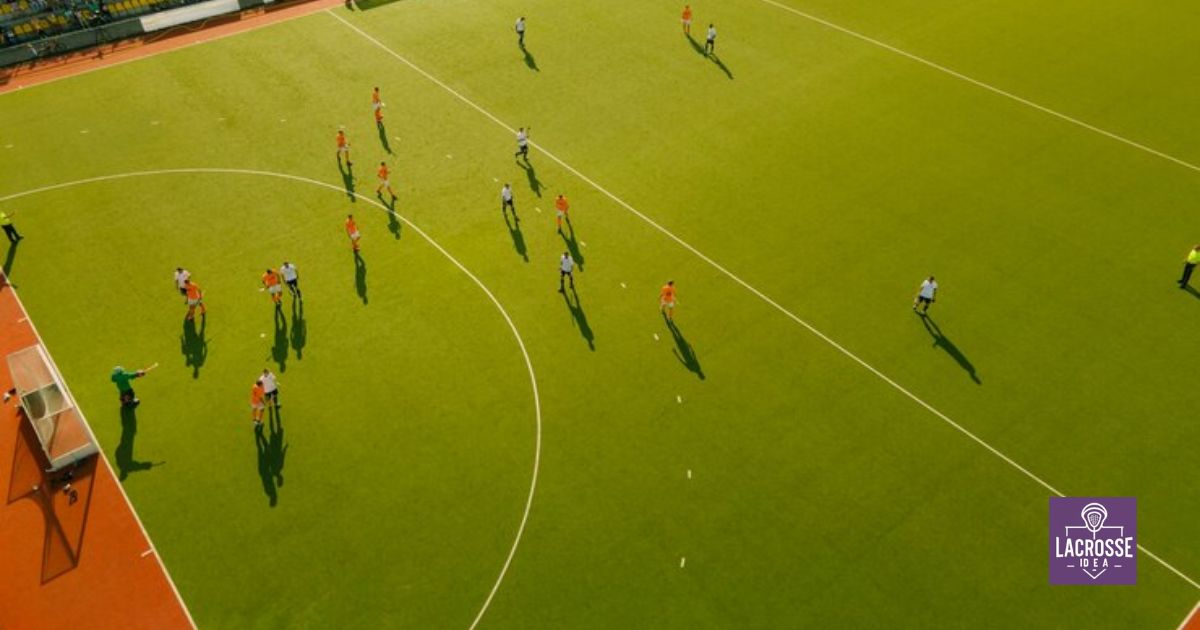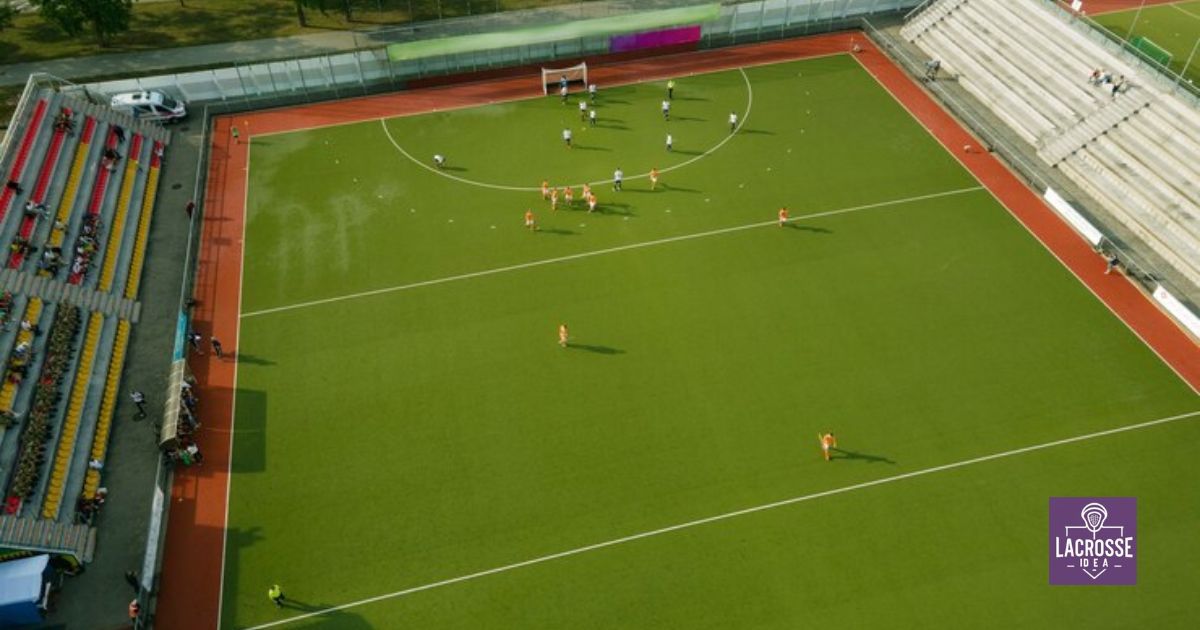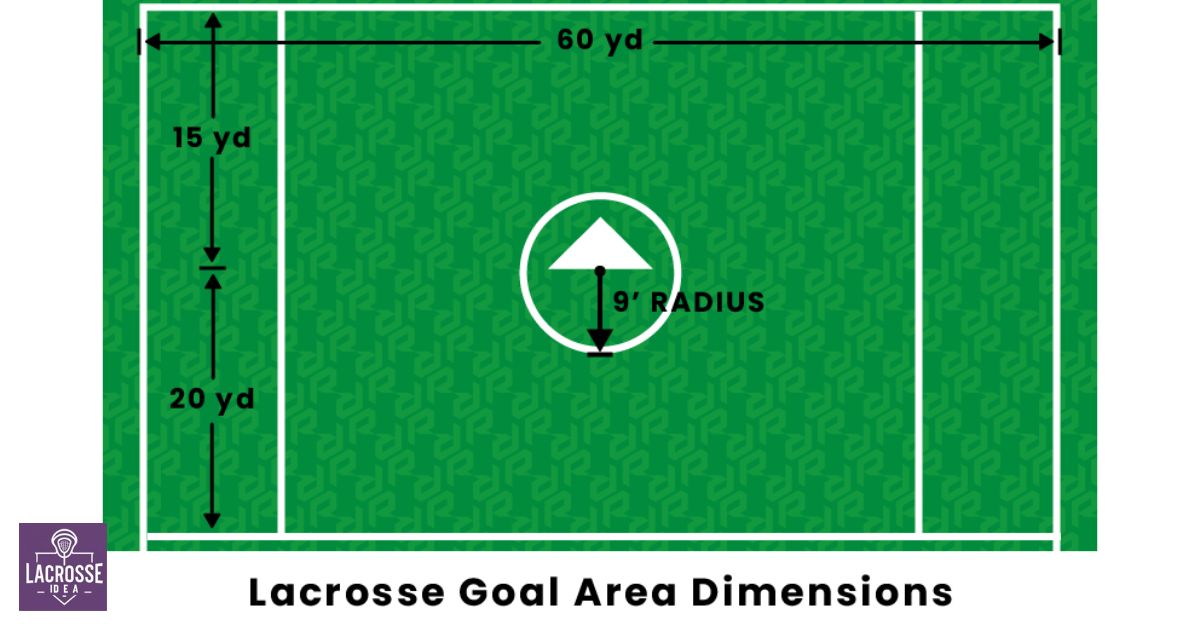Welcome to our guide on the dimensions of a lacrosse field. Lacrosse, a fast-paced and thrilling sport, is gaining popularity around the world. Understanding the dimensions of a lacrosse field is essential for players, coaches, and enthusiasts alike. In this article, we will explore the standard dimensions of a lacrosse field, including the boundaries, markings, defensive and attack areas, as well as the midfield dimensions.
Additionally, we will discuss the relationship between lacrosse field dimensions and the rules of the game, providing valuable insights for players to enhance their strategies. Whether you are new to the sport or a seasoned player, this comprehensive guide will equip you with the knowledge to thrive on the lacrosse field.
Key Takeaways
- Lacrosse field measures 110 yards in length and 60 yards in width
- The field is divided into two identical halves with a centerline
- The defensive area is a circle with a 9-foot radius in men’s lacrosse and a semicircle with an 8.5-meter radius in women’s lacrosse
- The attack area extends 15 yards from each side of the goal line and is typically 40 yards wide
Standard Lacrosse Field Dimensions
The standard dimensions of a lacrosse field are regulated by official governing bodies and are essential for ensuring fair and consistent gameplay. According to the rules set by the Federation of International Lacrosse (FIL) and other governing bodies, a lacrosse field measures 110 yards in length and 60 yards in width. The field is divided into three main sections: two identical halves and a centerline dividing them.
Each half measures 60 yards by 60 yards, with a goal crease located 9 feet in front of the goal line. The goals are positioned at opposite ends of the field, with a distance of 80 yards between them. These standardized dimensions provide a consistent playing surface for lacrosse matches, allowing players to develop their skills and strategies within a familiar and fair environment.
Boundaries And Markings On A Lacrosse Field
Regulated by official governing bodies, the boundaries and markings on a lacrosse field play a crucial role in ensuring fair and consistent gameplay. These clearly defined lines and markings help players, officials, and spectators understand the parameters and rules of the game. Here are three important elements of the boundaries and markings on a lacrosse field:
- Sideline: The sidelines run the length of the field and mark the outer boundaries. Players must stay within these lines during play, and stepping out of bounds results in a turnover.
- End lines: The end lines mark the boundaries at each end of the field. They determine where goals can be scored and where goalies must defend.
- Crease: The crease is a circular area around the goal that only the goalie can enter. It helps protect the goalie and prevents opposing players from interfering with their movements.
Defensive Area Dimensions
Within the boundaries and markings of a lacrosse field, the defensive area dimensions hold significant importance for the positioning and strategy of the defending team. The defensive area, also known as the crease, is a critical zone where defenders aim to protect their goal from the opposing team’s offensive players. The dimensions of the defensive area are precisely defined to ensure fair and strategic gameplay.
In men’s lacrosse, the defensive area is a circle with a radius of 9 feet, while in women’s lacrosse, it is a semicircle with a radius of 8.5 meters. These dimensions dictate where defenders can position themselves and limit offensive players’ access to the goal area. By understanding and utilizing the defensive area dimensions effectively, the defending team can maintain a strong defensive line and thwart the opponent’s scoring attempts.
Attack Area Dimensions
An important aspect of a lacrosse field’s dimensions is the size of the attack area. This area is specifically designated for offensive players to strategize and score goals. The attack area dimensions are as follows:
- The attack area extends 15 yards from each side of the goal line.
- The width of the attack area is typically 40 yards.
- It is marked by two lines, known as the attack lines, which are 15 yards above and below the goal line.
These dimensions provide offensive players with the space they need to create scoring opportunities and execute their plays effectively. The attack area is a crucial part of the game, as it allows attackers to showcase their skills and contribute to their team’s success. Now let’s move on to discuss the dimensions of the midfield area.
Midfield Dimensions
The dimensions of the midfield area in a lacrosse field are determined by the rules and regulations set forth by the governing bodies of the sport. The midfield is the central area of the field, separating the attack and defensive zones. It is a critical space where players from both teams compete for possession and control of the game. The standard dimensions of the midfield area are 110 yards long and 60 yards wide.
These dimensions provide ample space for players to maneuver and showcase their skills. The midfield area is marked by lines, including the midfield line and restraining lines, which indicate where players can legally position themselves during face-offs and play. The dimensions of the midfield area play a crucial role in maintaining fairness, balance, and strategy in the game of lacrosse.
Wing Area Dimensions
The wing area dimensions on a lacrosse field are essential for defining the boundaries and strategic positions of players during gameplay. These areas, located on either side of the field, play a crucial role in the flow and dynamics of the game. Here are three key aspects of the wing area dimensions:
- Width: The wing area is typically 40 yards wide, extending from the sideline to the restraining line. This width provides ample space for players to maneuver and execute plays effectively.
- Markings: The wing area is marked by dashed lines that extend from the sideline to the restraining line. These markings help players and officials identify the boundaries and stay within the designated area.
- Strategic positioning: The wing area is often occupied by midfielders, who play a critical role in transitioning between offense and defense. Their strategic positioning in the wing area allows them to contribute to the team’s success in various aspects of the game.
Understanding the wing area dimensions is crucial for players to make strategic decisions and contribute effectively to their team’s gameplay.
Now, let’s move on to discussing the goal area dimensions.
Goal Area Dimensions
Moving from the wing area dimensions, let us now delve into the dimensions of the goal area in lacrosse. The goal area, also known as the crease, is a critical part of the field where the goal is located. It is a rectangular shape with specific measurements that ensure fair play and safety for the players. The dimensions of the goal area are as follows:
| Dimension | Measurement |
|---|---|
| Width | 18 feet |
| Depth | 18 feet |
| Height | 6 feet |
These measurements create a standardized goal area across all lacrosse fields, promoting consistency and fairness in the game. The dimensions of the goal area are designed to provide enough space for the goalkeeper to defend the goal while also allowing attackers to make strategic plays. With these dimensions in place, lacrosse players can confidently compete on any field, knowing that the goal area remains consistent.
Painting A Lacrosse Field
Continuing from the previous subtopic on goal area dimensions, let us now explore the process of painting a lacrosse field. Ensuring that the lines on the field are properly marked is crucial for players, coaches, and officials to have a clear understanding of the boundaries and areas of play. Here are some key steps involved in painting a lacrosse field:
- Measure and mark the dimensions of the field using the appropriate tools.
- Use high-quality paint that is specifically designed for outdoor sports fields.
- Apply the paint evenly and in accordance with the lacrosse field regulations.
Lacrosse Field Dimensions And Rules
To understand the layout and regulations of a lacrosse field, it is essential to delve into the dimensions and rules that govern this fast-paced sport. Lacrosse fields have specific measurements that ensure fair play and strategic gameplay. The field is rectangular in shape, with dimensions of 110 yards in length and 60 yards in width. The goals are positioned at each end of the field and are 6 feet by 6 feet in size.
The midfield line divides the field into two equal halves, and the restraining lines mark the areas where players must remain during face-offs. Additionally, there are certain rules that players must abide by, such as the offside rule and the shot clock. Understanding these dimensions and rules will greatly enhance one’s understanding and enjoyment of the game.
| Field Dimensions | Measurements |
|---|---|
| Length of Field | 110 yards |
| Width of Field | 60 yards |
| Goal Size | 6 feet by 6 feet |
| Midfield Line | Divides field into two halves |
| Restraining Lines | Mark areas for players during face-offs |
Lacrosse Substitutions
Lacrosse teams employ a strategic system of substitutions to maximize player efficiency and maintain a competitive advantage throughout the game. Effective substitutions not only provide players with rest but also allow coaches to adjust their strategies based on the game’s flow and the opponent’s tactics. Here are three key aspects of lacrosse substitutions to consider:
- Matchups: Coaches carefully select which players to substitute to create favorable matchups against the opponent’s players. This ensures that the team’s strongest defenders are matched up against the opponent’s best offensive players, and vice versa.
- Fatigue Management: Lacrosse is a physically demanding sport, and managing player fatigue is crucial. Coaches strategically rotate players to prevent exhaustion and maintain high energy levels throughout the game.
- Tactical Adjustments: Substitutions also enable coaches to make tactical adjustments based on the game’s circumstances. They can bring in players with specific skills or attributes to counter the opponent’s tactics or exploit weaknesses.
Tips For Playing On A Lacrosse Field
Effective utilization of a lacrosse field requires players to be mindful of their positioning and maintain a keen awareness of the field’s dimensions. By understanding the layout and dimensions of the field, players can strategically position themselves to maximize their impact on the game. Here are some tips to help players make the most of their time on the lacrosse field:
- Stay in your designated area: Each player has a specific position on the field, and it is crucial to stay within the boundaries of that position to maintain proper spacing and defensive coverage.
- Communicate with your teammates: Effective communication is key to ensure smooth transitions, defensive strategies, and offensive plays. Talking to your teammates can help coordinate movements and keep everyone on the same page.
| Tips for Playing on a Lacrosse Field |
|---|
| Stay in your designated area |
| Communicate with your teammates |
Transitioning into the subsequent section about ‘youth lacrosse field dimensions adjustments,’ it is important to note that the dimensions of a lacrosse field for youth games may be adjusted to accommodate their age and skill level.
Youth Lacrosse Field Dimensions Adjustments
Youth lacrosse field dimensions can be adjusted based on the age and skill level of the players, ensuring the appropriate size for their development and gameplay. It is important to provide young players with a field that suits their abilities and promotes their growth in the sport. Here are some adjustments that can be made:
- Smaller field size: For younger players, the field can be scaled down to accommodate their smaller size and shorter throwing and shooting distances.
- Reduced goal size: To make scoring more attainable for beginners, the size of the goal can be adjusted to create a greater chance of success.
- Simplified markings: Clear and concise markings on the field can help young players understand the game better and navigate the field with ease.
FAQ’s
What is the lacrosse stick called?
The tool used to play lacrosse is called a crosse, or lacrosse stick. In addition to handling the ball, players use their lacrosse sticks to “check” or strike the sticks of opponents, forcing them to drop the ball.
What is a score in lacrosse called?
Lacrosse scoring is very easy to understand. Only goals scored are eligible for points to be tallied. A goal is scored when a player shoots the ball into the net of the other team and the goalie is unable to stop it. A point is awarded for each goal.
What are lacrosse fouls?
Pushing, holding, warding off, improper technique, improper screens, interference. They keeps the ball out of play, misconduct fouls, offsides, and crease violations are all considered fouls. Pressing. It is forbidden to push a player who is not in possession of the ball or who is not five yards away from a loose ball.
What is a lacrosse slash?
“Slashing” is one of the most prevalent lacrosse penalties, among younger players. When the defender makes contact with the offensive player’s body without using the stick, it is referred to as a slash. The penalty for slashing is one minute.
Conclusion
In conclusion, understanding the dimensions of a lacrosse field is crucial for players and coaches alike. The standard dimensions, boundaries, and markings enable fair and competitive gameplay. By knowing the defensive and attack area dimensions, as well as the midfield dimensions, players can strategize their positions and movements on the field.
Additionally, following the rules and making effective substitutions are essential for a successful lacrosse game. So, next time you step onto a lacrosse field, can you envision the precision and skill required to navigate its dimensions?








